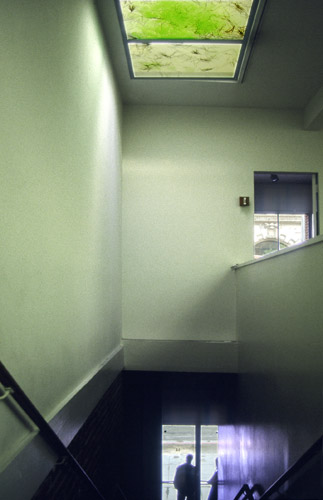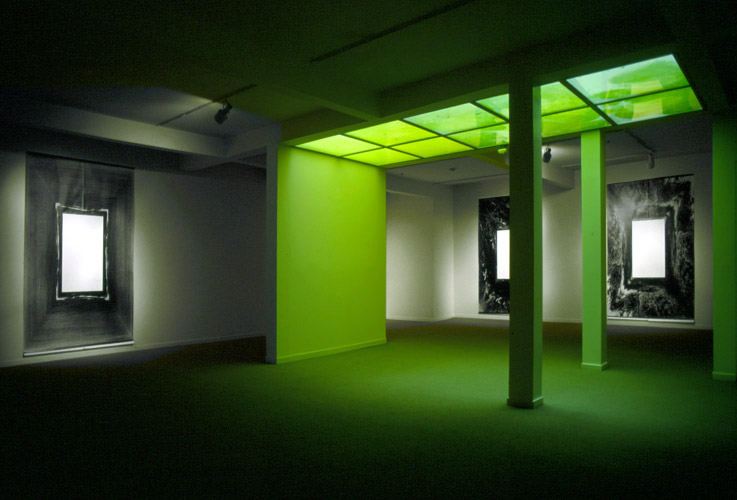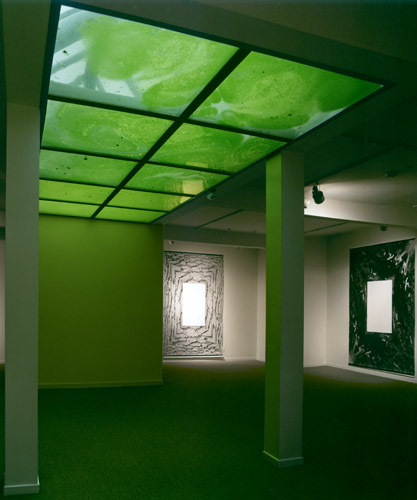Originial
Depositional Environment
Installation
of living algae and photoworks: Gallery Paule Anglim, San Francisco,
CA 2001
Left: Depositional
Environment II, 6 ft. x 4 ft. algae, water,
wood, acrylic, stairwell skylight.
Center: foreground:
Depositional Environment I, 18 ft. x 8 ft., algae, water,
wood, acrylic, central gallery skylight; wall left to right: Landscape
Projection (for an Unknown Window) No. 10, 6 and 7, 9
ft. x 6 ft., b&w photograph.
Right: Depositional
Environment I; wall: Landscape Projection (for an Unknown
Window) No.
9 and 6.
Depositional
Environment I and II
The exhibition Original Depositional Environment at
Gallery Paule Anglim in San Francisco, CA. is predicated on
the concept
that
much of architecture is a special mineral-lithologic assemblage,
a geologic formation created by humans. In the example of
Gallery Paule Anglim, the building is clad in fired sedimentary
clay
brick cemented together by cement and sand derived from limestone,
the internal structure of steel is refined iron ore and the ‘sheetrock’ internal
wall coverings are a form of the mineral gypsum. The idea
of human-based geology can be generalized with the term "anthroturbation," meaning "human-disturbed." In
the 1999 essay, describing the work, Holocene
Terrace, this
concept was elaborated on further: This
term describes the disturbance, dislocation and restructuring
of geologic formations and materials by human agencies
into new forms. These processes have analogies in the natural
world, such as: mining as erosion, transport as flow and construction
as sedimentation. Likewise, the built topography of a city
can be understood in geomorphic terms: streets as canyons,
buildings as plateaus, sewers as caves and plazas as playas.
|
Central
to Original Depositional Environment’s concept
are the installations, Depositional Environment
I and II. These
are transparent, water-filled constructions containing
living algae inserted into its skylight wells of the
gallery. The
algae and water are used as signifiers for primal marine,
estuarine, fluvial and paleo-climactic environments
of the geologic past and the process of deposition
of silts, sand
and other materials collecting in these conditions
that would later be lithified into slate, sandstone
or shale. As in
the project, Holocene
Terrace,
installed in a Manhattan gallery in 1999, which used
moss in a similar manner, the botanical
material’s visual presence and vitality are dependent
upon external conditions such as sunlight, rain or
temperature, the current "depositional environment." Completing
the exhibition are five digitally augmented photographs
of landscape imagery wrapping a central window/void
from the Landscape
Projections (for an Unknown Window) series,
1998-2001, installed on the gallery walls subtly receiving
algae influenced illumination and further echoing the
theoretical reference of architecture to natural
systems.
|
|


